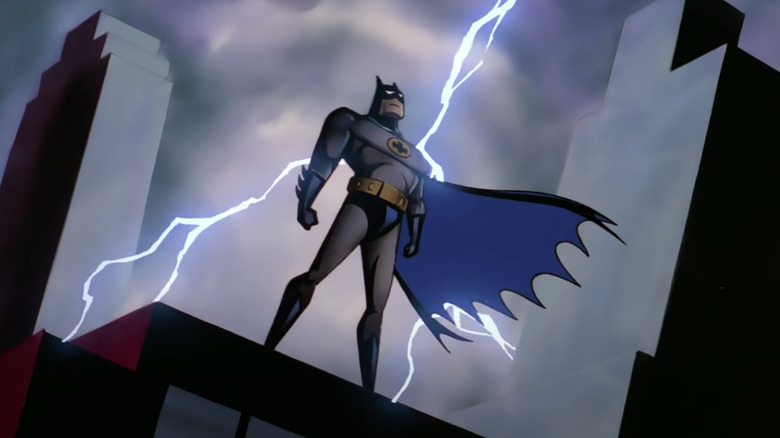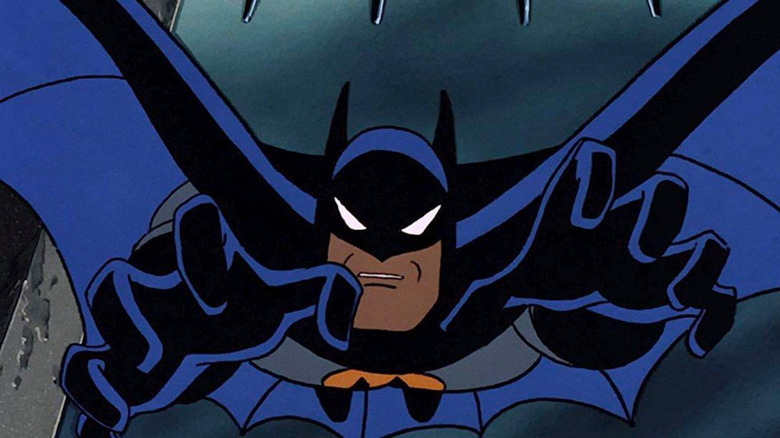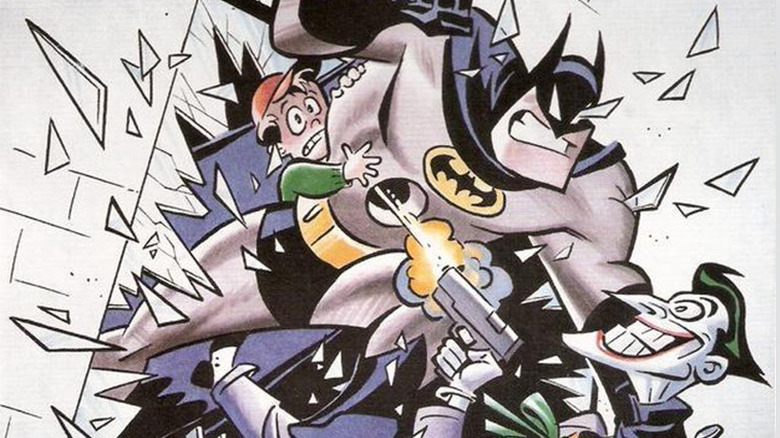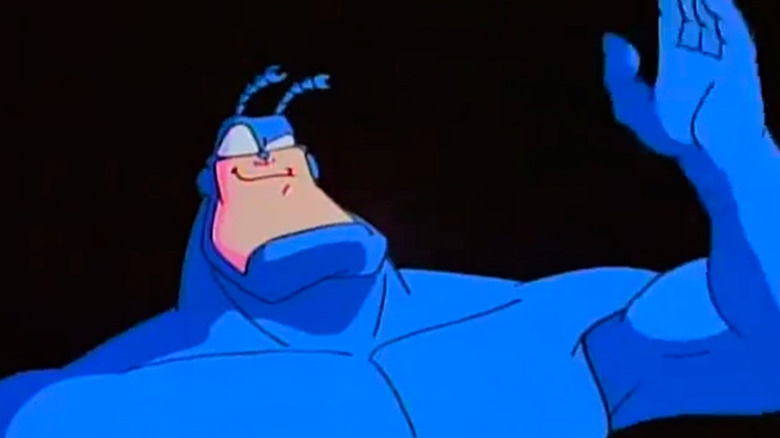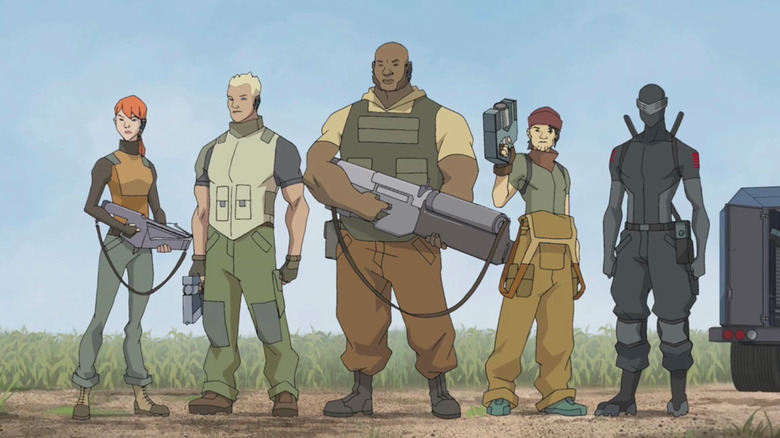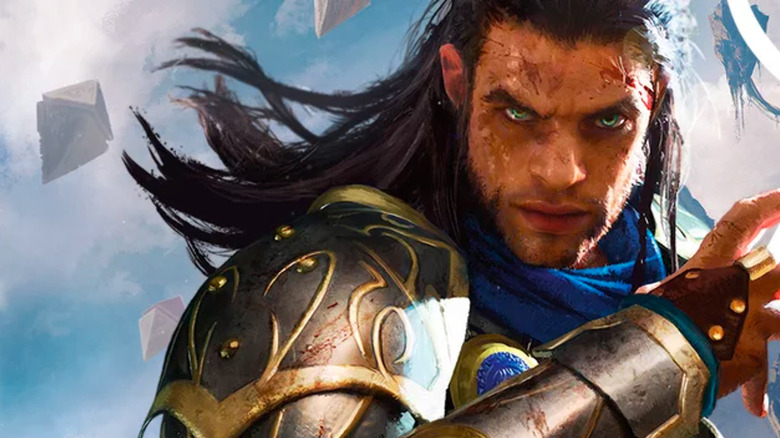Batman: The Animated Series Writer Henry Gilroy On Dark Knight Violence, Donald Duck Arguments, G.I. Joe Woes & More [Exclusive Interview]
(Welcome to My Most Ridiculous Note, a series of interviews in which animators talk about the weirdest and funniest notes they received from studio executives.)
"Batman: The Animated Series" is considered by many to be the defining portrayal of the Caped Crusader, a show with incredible visuals, great characters, and stories that didn't talk down to kids while capturing the essence of the comics. The iconic line, "I am vengeance, I am the night, I am Batman!" has stuck with the character for over 30 years, becoming Batman's unofficial official catchphrase.
That famous line comes from the episode "Nothing to Fear," written by Henry Gilroy. An animator who has worked in the industry for decades, starting out on Steven Spielberg's "Tiny Toon Adventures," Gilroy has worked on some of the biggest franchises of the past couple of decades, developed a "G.I. Joe" reboot, written on several Marvel cartoons, as well as a "Mass Effect" anime film. Gilroy also developed a little show titled "Star Wars: The Clone Wars," alongside Dave Filoni and George Lucas.
Gilroy has seen entire animation programming blocks rise and fall, and during that time, he's given us some of the most iconic animated episodes in modern animation history. /Film spoke with Gilroy about his filmography, and the conversation was so good and full of great anecdotes that we decided to split the interview into two parts. In this first half, Gilroy talked about working on "Batman: The Animated Series," silly Disney notes, bringing "G.I. Joe" to the modern age, briefly voicing Batman, and much more.
Nightly vengeance and vengeful bats
Both directly adapting storylines from the comics as well as offering entirely original stories, "Batman: The Animated Series" struck the right balance between appealing to fans who wanted recreations of the issues they knew, and new fans who wanted to get into Batman without reading hundreds and hundreds of issues.
Key to the success of the show was the casting, with the late Kevin Conroy embodying the Caped Crusader and giving the character a layer of eternal mourning and melancholy that helped make this such an important portrayal of Batman. Likewise, Mark Hamill revolutionized Joker for a whole generation. But before Conroy, someone else briefly voiced Bruce Wayne — Henry Gilroy.
As the animator explained, Bruce Timm and Eric Radomski made a minute-and-a-half promo video to show what the cartoon would look like. Because Gilroy worked in editorial, he cut the music together from Danny Elfman's "Batman" score to add to the promo, but when they were recording the voices of the promo, they needed impact sounds for when Batman punches some thugs. It was Timm and Radomski who voiced the thugs, but they needed a Batman. "They said, 'They actually punched Batman. Henry, go in there and do the voice of Batman getting punched for the promo,'" Gilroy said. "No one knows this, but actually, I was the very first voice of Batman."
It is stunning to rewatch "Batman: The Animated Series" today and see how grounded and mature the show was, all while still being aimed at young audiences who watched afternoon cartoons. Even more than the action, it's that the show doesn't shy away from adding weight to the fights. The animation makes every punch feel heavy, and every crash through a brick wall look painful. The cartoon has an overall dark and noir-inspired mood that gives it a more mature tone like you're watching a character drama more than a colorful cartoon.
According to Gilroy, the network was very encouraging in making this stand out from other cartoons. "Let's make these stories not adult in nature, but just not aimed down at kids," he said. "Have the stakes be real, real jeopardy and danger, and have the emotions be real, rather than caricaturized, or stylized, or exaggerated for cartoons."
The nine taboos
Even if the show was still aimed at kids, the fact that it was animated helped it get away with some of the darker and more violent material. As Gilroy told us, executives tend to read the script and imagine a fight scene in live-action, which of course looks way worse, rather than in animation where the extra layer of separation from reality helps suspend your disbelief.
Take for instance Gilroy's "Nothing to Fear" episode, where Batman throws a thug from a zeppelin, which should probably result in his death — except he somehow falls onto a tree, which breaks his fall. "You see a character get smashed into a wall, or the Batarang sticks in their hand, you don't see blood," the animator said. "It's not quite the same thing as if you see that in real life, in live-action. We always counted on that."
Still, as many liberties as "Batman: The Animated Series" had, it still had some limitations. The show famously had nine big taboos they couldn't show: guns, drugs, breaking glass, alcohol, smoking, nudity, child endangerment, religion, and strangulation. The network was mostly worried about acts that children could replicate, with a big one being crashing through glass windows — something Batman does on the regular.
There's an image that gets shared every so often portraying all the things the show wasn't allowed to do. This was inspired by the number of notes given to the crew in the beginning, which prompted Gilroy to start making a list of all the things they weren't allowed to do. "Bruce heard I was doing it, he did the drawing" which crammed every big taboo into a single image.
As you'll recall, the show still had plenty of guns and scenes of Batman crashing through windows, but only after several arguments. When it came to the windows, the network wasn't okay with glass, but other things were totally fine, like brick walls. "Batman will hit a guy with such force, his face will go through a brick wall," Gilroy told us. "They'll go, 'That's fine, that's okay.' You can't really replicate that. It's like, 'Oh my gosh, that's brain damage because he put his face through a brick wall.'" It doesn't matter that it's obvious brain damage, what matters is that it's not replicable behavior.
As for the guns, "Batman: The Animated Series" had plenty of them, from the thugs, to the cops, to the supervillains. According to Gilroy, it was a constant negotiation, and part of how the show got around to portraying guns was to avoid realistic-looking ones. Joker would have a spear gun, or a gun with a fist on it, or Tommy Guns. "My most recent projects that I've done over the last few years, I've made a conscious decision not to use actual firearms in them," Gilroy said. "I'll use energy swords, or some kind of laser, or plasma beam weapons. We have so much gun violence, and it's become this weird disease on our culture, I'm avoiding it."
Why would a duck need a life preserver?
After working on "Batman: The Animated Series," Gilroy wrote for another superhero comedy, albeit a vastly different one — "The Tick." A parody of superheroes, the show was a fantastic comedy that poked fun at comic book conventions and tropes while still telling a compelling and entertaining superhero story in its own right.
For Gilroy, who was already a big fan of superheroes, lampooning them was easy, but just because the show had a lighter tone doesn't mean they got fewer notes. As the animator tells us, he did an episode called "The Tick vs. The Uncommon Cold," where Tick was cloned based on a used Kleenex, resulting in a character called Mucus Tick, who was essentially an evil twin. The episode ends with Tick snorting his evil twin back up his nose and sneezing him into another dimension. "I think there was a closeup of a wavering nostril, with snot going up of it," Gilroy recalled. "It was disgusting. They go, 'That's probably too much. That's too gross.'"
Gilroy also worked for the mouse on a few shows, including "House of Mouse" and "Mickey Mouse Works," attempts at keeping the iconic mascot of the Disney company alive with rather cool and entertaining stories. Unsurprisingly, such important characters are closely guarded by the studio, even if it doesn't always make sense.
One particularly ridiculous and frustrating note Gilroy shared involved a segment where Donald Duck was in a canoe. The character was meant to flip out of the boat and go down some rapids, pinballing off the rocks, but Disney had other plans. "They said, 'Well, if he's going to be in the canoe, he has to have a life preserver on,'" Gilroy said. "And I was arguing that, 'Yeah, but he's a duck." Not only does it mess with the comedic timing of the scene — as Gilroy explained "if he has a light preserver on, it's not as funny if his face flattens into a rock, and then he spins around and then flattens into another rock," — but why would a duck, anthropomorphic or otherwise, need a life preserver?
"Okay, even if he is a 'human duck' or a duck with anthropomorphic [features], he doesn't swim the same way. The life vest, the life preserver is clunky, it's square. It messes up his design. It's not as cool."
A revival for a different era
In 2010, Gilroy helped develop a new version of a classic franchise with "G.I. Joe: Renegades." The show offered a vastly different take on the military material to go along with the times. "Worldwide, the U.S. military was not looked at in a very positive light," Gilroy said. "We can't just have these guys be gung-ho, U.S. military guys shooting up everything because of what happened in the Middle East, so we also thought, well, we probably could tell more character centric, stronger character stories if we focus on a smaller group of Joes, and we have them on the run."
The result was a show that resembled "The A-Team" more than classic "G.I. Joe" cartoons, with a bigger focus on the small team dynamics, while making Cobra a relatable threat. Unfortunately, the show only lasted one season, even though the writers were already hard at work on season two by the time it was canceled, which would have built on the cliffhanger ending of Cobra being exposed as the shadow government in the White House. "We had a second season where literally Cobra Commander was Osama bin Laden, who's basically on the run full on [...] They were terrorists," Gilroy revealed. "Then the Joes were brought back to be special agents for the government who were hunting down Cobra terrorists so, it was going to be really fun. We had a really fun stories for it, but this, c'est la vie."
If you think that plot sounds a bit similar to the live-action movie, you're not wrong. "We were like, 'Wait a second. You guys can't do that. That's what...' And they're like going, 'Yeah, yeah, yeah.'" To make matters worse, Hasbro had a rule that they could not have so many different toy lines at the same time, so because the animated show conflicted with the movie, they stopped production on the second season — although it surely didn't help that the movie was a financial failure.
In terms of notes, the show was also unfortunate in that it was coming out right as "The Avengers" was about to be unleashed on the world. To capitalize on the movie that would forever change blockbuster cinema, one of the executives who took over the toys' designs said, "Can you make all of the Joes into Avengers?" As Gilroy tells it, they asked if Snake Eyes could be more like Wolverine or if Roadblock could be more like the Hulk.
"And I think they were thinking, like, 'Oh, right, we're going to give Duke a bow, so he'll be like Iron Man and Hawkeye.' All those weird things, where the toys come first and then you write your story after."
A little less magic in the world
The latest project Gilroy was working on was an animated "Magic: The Gathering" show. Originally announced back in 2019, the animated series would have seen the Russo Brothers adapt the vast mythology and world of the incredibly popular trading card game, one of magic and monsters (and very expensive cards). The show also would have seen Gilroy work with Jose Molina, serving as lead writers and co-executive producers, along with Yoriaki Mochizuki ("Into the Spider-Verse") acting as supervising director.
Unfortunately, it seems the original iteration of the project is no longer happening. Though the show gained Brandon Routh in a lead role, it lost the Russo Brothers, who were replaced with Jeff Kline, who is now supervising the show. Sadly, Gilroy is also no longer involved with the show. He said:
"I was on it for about six months, and after the Russos pulled back, and my involvement was part of them, the studio decided to go in a different direction. As far as what happened, whenever you're dealing with huge properties like this, a lot of times the direction will change and then the creative team will go in a different direction. It's just one of those things that happens."
Gilroy is currently working as an executive producer on "DreamWorks Dragons: The Nine Realms," which you can watch on Peacock. Both "The Clone Wars" and "Star Wars: Rebels" are streaming on Disney+. "Batman: The Animated Series" is available on HBO Max, while "G.I. Joe Renegades" is currently streaming on Tubi.
